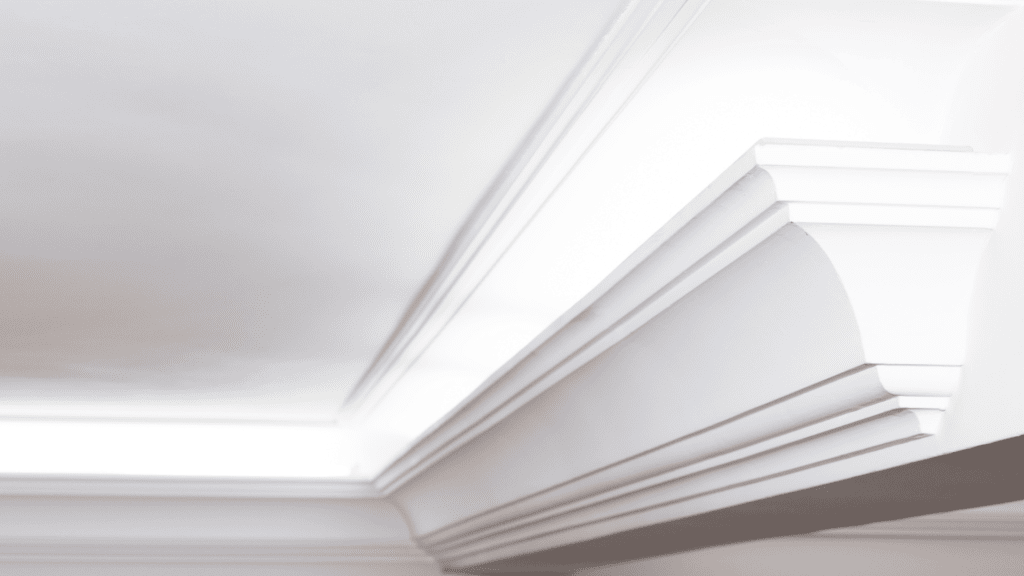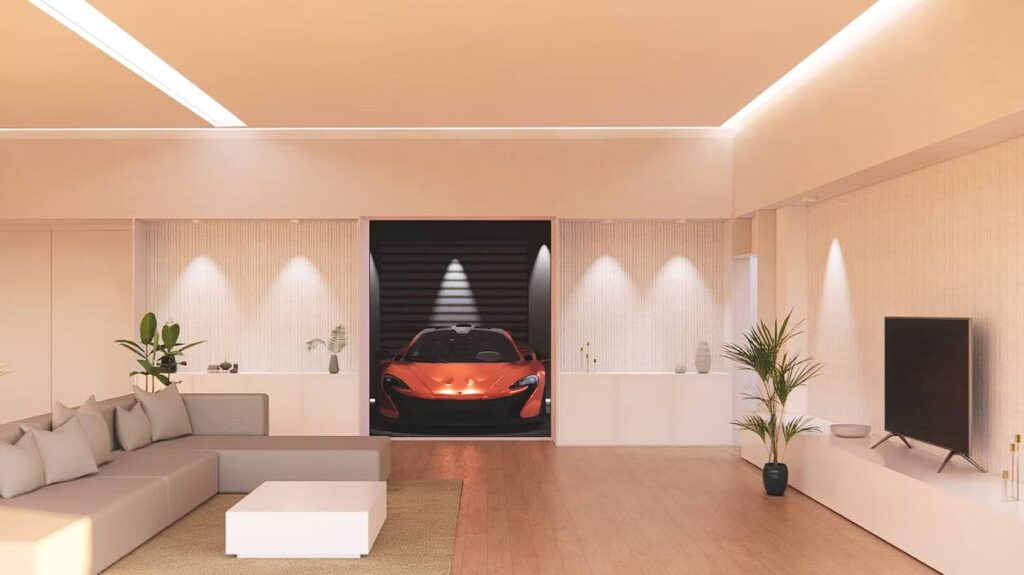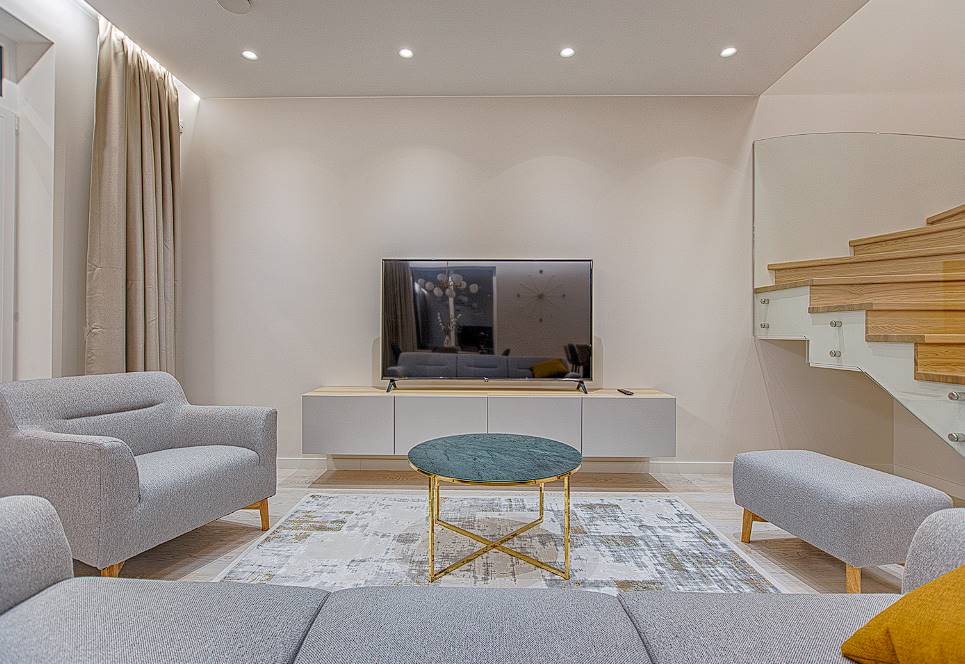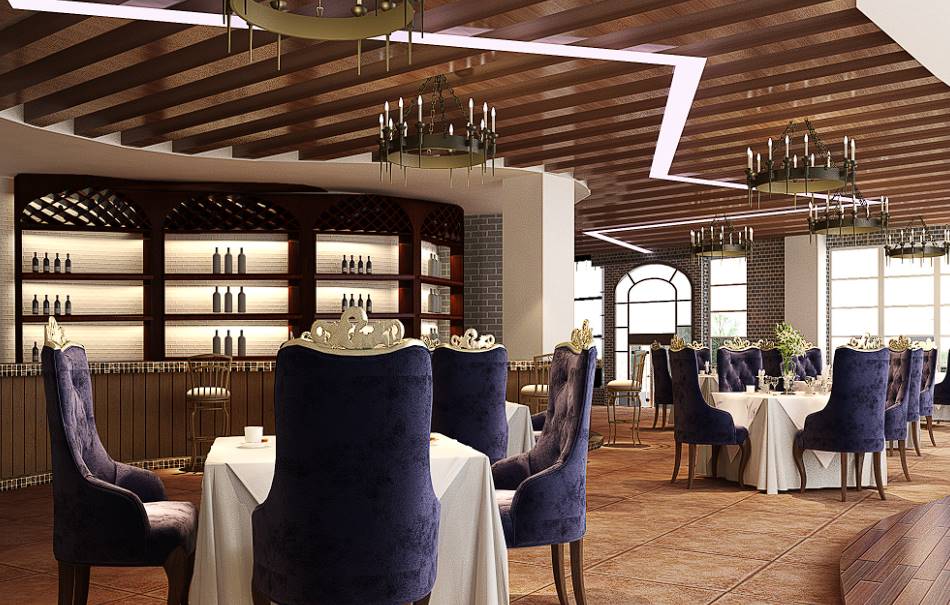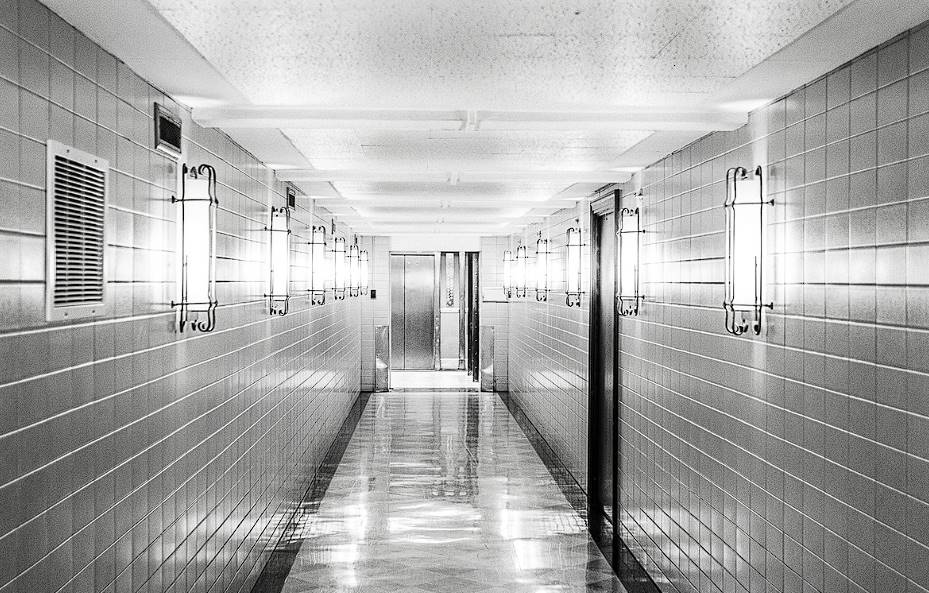The world of ceilings and gyprock cornices awaits you, and it promises to be fascinating. This book will take you deep into the fascinating world of architecture, from different ceilings to the sophisticated beauty of gyprock cornices and much more. The elegance, practicality, and potential for change inherent in architectural details like cornices and suspended ceilings will be discussed in detail. Join us as we reveal the hidden potential of ceilings and gyprock cornices, whether you're a homeowner, interior designer, or someone interested in learning more about architectural details. Let's go on an expedition right now!
Types Of Ceilings
Vaulted Ceilings
Ceilings with vaults can be any height above the floor. It describes any type of ceiling higher than the rest of the room, including the cathedral and shed ceilings. However, vaulted ceilings are only sometimes curved and might be flat and high.
Cathedral Ceilings
Structural symmetry is a hallmark of cathedral ceilings. Each parallel side is the same length, converging in the middle to form a point. It's a tried-and-true style that always looks great. The problem is that it rules out adding a second story... However, many houses only do this to the main room and keep the second story for bedrooms and other uses.
Coffered Ceiling
The coffered ceiling is a sophisticated alternative to the traditional drop ceiling, combining crown moulding with exposed ceiling beams. To produce a visually appealing ceiling, crown moulding is attached to a succession of beams in a geospatial pattern (often square or rectangle). The ceiling now has more depth and visual appeal.
Tray Ceiling
The tray ceiling gets its name because it resembles a tray top. It adds an illusion of height to the ceiling and defines the space around it. It's perfect for open floor plans since dividing a large communal area into smaller, more intimate living quarters is easier. The tray ceiling in the top image serves as a visual divide between the cooking, dining, and lounging areas.
Shed Ceiling
Shed ceilings, a variant of vaulted ceilings, are flat on one side and slanted in the opposite direction. They may be pronounced or understated. The roof in the previous example is a simple shed roof. The higher half of the ceiling is raised so that a series of windows may be installed there, flooding the space with natural light.
Cove Ceiling
Various styles of cove ceilings are available. It doesn't matter if the ceiling rises in straight lines, inverted steps, or curves; the idea is that it will do so gradually. The aforementioned illustrates an elevated cove ceiling designed with sharply angled straight lines.
Beamed Ceiling
A ceiling with visible beams is called a "beamed" ceiling. The number of beams can vary. They can be built into either a standard or vaulted ceiling, as demonstrated above. It's a popular design choice since it enhances a room's aesthetic value while saving money on labour costs by eliminating the need to install actual wood beams in the ceiling.
Barrel Vault Ceiling
The ceiling of a room with a barrel vault is an upward arch that runs the length of the space.
Dome Ceiling
The dome ceiling is an elevated, spherical ceiling. Both full-room domes and insertion domes like the one pictured above are possible.
Groin Vault Ceiling
The complicated groyne vault ceiling, made up of a sequence of partial domes and arches, is one of the most dramatic and stunning ceiling designs.
Tall Ceilings
In architectural terms, a high ceiling is not a ceiling at all. This general word describes any ceiling above the typical range (eight to ten feet).
We decided to add it because "high ceilings" is a common search term, so we included a photo gallery of several high-ceilinged spaces.
Regular Ceilings
We finish this type of ceiling with the most typical ceiling, which is a standard one. A standard ceiling height is between 8 and 10 feet. Recessed lighting is widely used today since it is practical for lighting the room and visually appealing as a design feature.
Different Ceiling Cornices
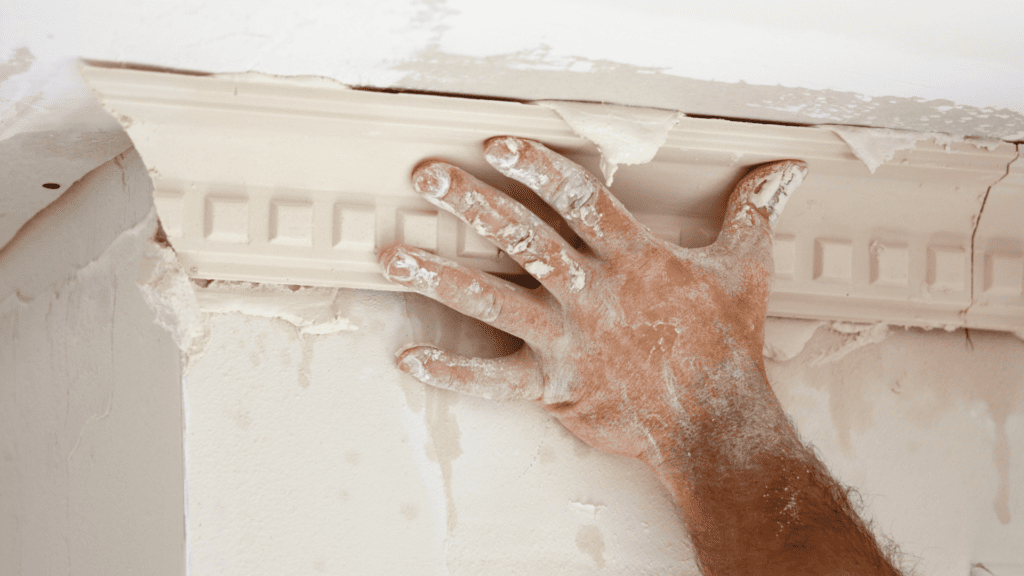
Cornices can be crafted from several different components. Gypsum, plaster, paper-covered, polyurethane, POP, medium-density fibreboard (MBF), glass-reinforced concrete (GRC), and wood are common options.
Gypsum
It is a mineral that may be extracted from the ground. It can be returned to its previous hardness because it dissolves in water. Because of its malleability, it works great for making cornices. In addition, gypsum cornices that have seen better days can be repurposed.
Plaster
Plaster cornices are often crafted from cement, lime, or gypsum. You can use oil or water-based paint on these materials, although they are quite pricey. When erecting a plaster cornice, attention must be used.
Paper-covered gypsum or plaster.
They are composed of lime or gypsum between two paper faces and pressed into shape. You can paint them with oil or water-based paint, and they'll look like gypsum or plaster cornices.
Polyurethane
This material is versatile in both appearance and strength, being both lightweight and durable. It can be painted on with either oil or water-based paints.
POP
Lime, cement, or gypsum are the main ingredients in this product.
GRC
Sand, cement, water, and glass fibres create this. It's a high-quality material that's easy to work with, looks great no matter what style you're going for, and doesn't weigh a tonne. It can accurately reproduce any moulding style in any conceivable shape.
MDF
This material has many potential uses in construction, including constructing cornices. Its smoothness makes it suitable for various finishes, particularly painting. MDF is simply sawdust that has been heated and pressed together with glue.
Timber
The versatility of wood makes it a go-to for many building projects. Cornices made of wood are beautiful but costly since they must be treated to prevent warping.
Choosing A Cornice Or Coving For A New Home Or Construction
Don't rush things
Take your time and select a cornice or coving for your room that reflects your sense of style as a first step. Always choose something aesthetically pleasing, no matter how old or modern your structure is. Once installed, cornice and coving aren't meant to be removed (they can be replaced, but the process is dusty and messy), so giving some thought to your options ahead of time is a good idea. If you're having trouble deciding on a cornice style, a little sample attached to your ceiling and wall may help.
Ceiling Height
The height of your ceiling should be taken into account when making your choice of cornice or coving. There are no hard and fast rules regarding the size of a cornice; nonetheless, if you choose a cornice that is too little or too large for the room, it can throw off the proportions of your design. The typical height of an Irish ceiling is 2.4 metres. Thus, a cornice for such a room would have a projection of 75 to 130 millimetres along the ceiling and a depth of 75 to 130 millimetres along the wall.
Size of your Room
Your room's scale should be considered while deciding on a cornice or coving. If your foyer or workplace has a typical ceiling height, opting for smaller cornices or coving will make the space feel less claustrophobic. Too large of a cornice will visibly lower the ceiling and make the space feel smaller. Consider a cornice, like the Small Gem Cornice or the Belgravia Cornice, with a greater projection along the ceiling and less down along the wall if your room has a low ceiling but is otherwise quite spacious; this will complement the room's existing proportions while still providing the decorative element you desire.
The overall design of the room/property
While personal preference is usually the most important factor, it can be good to consider the age of the property you're decorating. Is it a new building or a historic one? Is it a brand-new construction to which you hope to introduce vintage touches? Said, cornice with decorative characteristics like egg and dart or grape and vine motifs is more traditional, while plain cornice is more in keeping with today's aesthetic. However, this regulation has been disregarded so frequently that it no longer counts as a regulation. Original simple cornices can be seen on many older Georgian, Victorian, and Edwardian homes, while many modern residences feature magnificent ornamental moulding. Selecting a cornice or coving that harmonises with the look and feel of your project should be your priority.
Do any obstacles exist?
Ensure you have enough space on the wall or ceiling to install your cornice or coving before finishing your design. This includes checking around any windows, doors, lights, attic doors, or built-in furniture.
Which Ceiling Cornice Should I Pick?
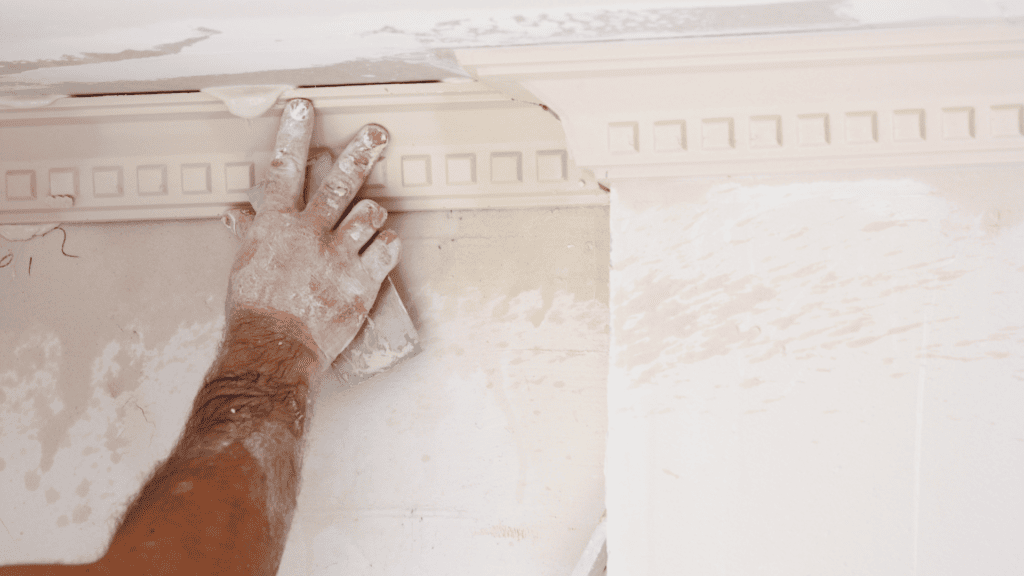
Consider the room's dimensions, the type of material you'd like the cornice to be created from, and your taste when selecting a ceiling cornice. Cornices for the ceiling can be found in a wide range of widths. You may customise the look and even the process of installing your cornice by selecting from various materials. The ceiling cornice you choose should complement the room's decor, and there are many options.
The standard height for a ceiling cornice is between 5 inches (12.7 cm) and 9 inches (22.86 cm) when measured from the ceiling to the floor. However, some cornices can be up to 20 inches (50.8 cm) tall. If you want a ceiling cornice but need help deciding what size to choose, consider the height of your ceilings. Whether or not you want the cornice to blend in or stand out is another consideration when deciding on its size. A bigger cornice will have a more impressive visual and functional impact on the space.
Wood, plaster, and metal are all common materials for ceiling cornices. While the finished products of wood and plaster may look comparable, plastering may be messy and time-consuming. Because of this, many shoppers choose wood because it's straightforward. Hollow wooden cornices can be manufactured to be more manageable in size and weight. Metal ceiling cornices come in various styles and finishes, such as brass, copper, and chrome.
Cornices can have a contemporary or classic look, depending on the rest of the room's design. Some are extremely minimalist in design, including only a few lines and perfect symmetry, while others feature elaborate embossed or carved patterns. Its stepped or multi-level design influences a ceiling cornice's potential for drama and aesthetic contribution. When deciding on a ceiling cornice, consider the room's current design and the look you hope to achieve.
Conclusion
The architectural realm of ceilings and gyprock cornices is a fascinating one. There are many different ceiling styles to choose from, such as vaulted or cathedral ceilings, coffered or tray ceilings, shed or cove ceilings, beam or groyne vault ceilings, or a simple flat ceiling. Vaulted ceilings are soaring over the rest of the space, while cathedral ceilings are symmetrical in design. Crown moulding and exposed beams create a striking visual effect in a coffered ceiling. Open floor plans benefit greatly from the visual height and spatial definition that tray ceilings provide.
The roofs of sheds are usually horizontal in one direction and sloped in the other to let in more skylight. Straight lines, inverted steps, and curved lines are all options when designing a cove ceiling. Ceilings with exposed beams are both aesthetically pleasing and cost-effective. The normal ceiling height in the United States is between 8 and 10 feet, therefore, high ceilings are anything higher than that. Gypsum, plaster, paper-covered gypsum or plaster, polyurethane, POP, MDF, GRC, and wood are just some of the materials that can be used to create ceiling cornices.
These materials are adaptable in both look and strength, making them useful in many contexts. Cornices and coving are crucial additions to any building. You may simply alter their form and look by using materials like MDF, lumber, or wood to create these shelves. Consider the room's scale, ceiling height, and design scheme before settling on a cornice or coving. Plain cornices are more modern, whereas those with decorative elements like egg and dart or grape and vine are more traditional.
Cornices for ceilings typically range in height from 5 inches (12.7 cm) to 9 inches (22.86 cm), though they can be as tall as 20 inches (50.8 cm) in exceptional cases. Think about the height of your ceilings and whether or not you want the cornice to draw attention when choosing a size. Common materials for ceiling cornices include wood, plaster, and metal; however, plastering may be a messy and time-consuming process. Many different designs and metal treatments are available for ceiling cornices made of metal.
Depending on the style of the space, a cornice could be simple and modern or ornate and historic, with embossed or carved motifs. Its stepped or multi-level form affects the ceiling cornice's dramatic and artistic potential. Choose a ceiling cornice that complements the room's style and theme.
Content Summary
- Explore the fascinating world of ceilings and gyprock cornices in this book.
- Discover the elegance, practicality, and potential for change in architectural details.
- Join the expedition into the world of ceilings and gyprock cornices.
- Learn about different types of ceilings, including a vaulted, cathedral, coffered, tray, shed, cove, beamed, barrel vault, dome, groin vault, tall, and regular ceilings.
- Vaulted ceilings can be curved or flat and are higher than the rest of the room.
- Cathedral ceilings feature structural symmetry and converge in the middle.
- Coffered ceilings combine crown moulding with exposed beams for visual appeal.
- Tray ceilings resemble tray tops and add an illusion of height to the space.
- Shed ceilings are slanted in one direction and allow natural light through windows.
- Cove ceilings rise gradually in various styles, creating a unique aesthetic.
- Beamed ceilings have visible beams and enhance a room's aesthetic value.
- Barrel vault ceilings are upward arches that run the length of a room.
- Dome ceilings can be full-room domes or insertions, creating an elevated, spherical design.
- Groin vault ceilings are dramatic and stunning, made up of partial domes and arches.
- Tall ceilings go beyond the typical range of height, adding spaciousness to a room.
- Regular ceilings with standard heights of 8 to 10 feet are widely used.
- Different ceiling cornices can be crafted from gypsum, plaster, paper-covered materials, polyurethane, POP, GRC, MDF, and wood.
- Gypsum is a malleable mineral suitable for making cornices.
- Plaster cornices are made from cement, lime, or gypsum and require attention during installation.
- Paper-covered gypsum or plaster cornices can be painted to resemble the material.
- Polyurethane is a lightweight and durable material for cornices.
- POP is a product made from lime, cement, or gypsum.
- GRC is a high-quality material that can reproduce any moulding style.
- MDF is a versatile material suitable for various finishes, including painting.
- Timber cornices are beautiful but expensive due to the need for treatment.
- Consider your sense of style and aesthetics when choosing a cornice or coving.
- Take into account the height of your ceiling when selecting a cornice.
- The size of the room affects the choice of cornice to maintain proportions.
- Consider the overall design and age of the property when selecting a cornice.
- Check for any obstacles like windows, doors, or built-in furniture before installing a cornice.
- The dimensions, material, and personal taste should guide your ceiling cornice selection.
- Ceiling cornices are available in various widths and can be customised.
- The height of a ceiling cornice is typically between 5 and 9 inches.
- Wood, plaster, and metal are common materials for ceiling cornices.
- Wood is straightforward to work with, while plastering can be messy and time-consuming.
- Metal ceiling cornices come in different styles and finishes.
- Cornices can have a contemporary or classic look, depending on the room's design.
- Some cornices feature minimalist designs, while others have elaborate patterns.
- The stepped or multi-level design of a cornice influences its drama and aesthetic contribution.
- Consider the room's current design and desired look when choosing a ceiling cornice.
- This book offers a comprehensive exploration of the world of ceilings and cornices.
- Learn about the practical and aesthetic aspects of architectural details.
- Gain insights into the different types of ceilings, their characteristics, and uses.
- Discover the versatility of materials used in ceiling cornices.
- Understand the importance of proportion and scale when choosing a cornice.
- Consider the historical context and style of your property when selecting a cornice.
- Plan ahead to avoid messy and dusty processes if you wish to replace a cornice.
- Explore the potential of different cornice designs to enhance your room's aesthetics.
- Choose a ceiling cornice that complements the overall decor and design of your space.
- Enjoy the process of selecting and installing a cornice that reflects your personal style.
Frequently Asked Questions About Ceilings And Cornices
Cornices are decorative mouldings or trim pieces installed at the junction of walls and ceilings. They add a finishing touch and can enhance the architectural style of a room.
Cornices can be made from various materials such as plaster, wood, polyurethane, or even lightweight composite materials. The choice depends on the desired aesthetic and budget.
Cornices can be both pre-made and custom-made. Pre-made cornices are readily available in standard designs, while custom-made cornices can be tailored to specific requirements.
Cornices are typically installed using adhesive or nails. The installation process may vary depending on the material and design of the cornice.
Yes, cornices can be painted or stained to match the desired colour scheme of the room. This allows for further customization and coordination with the overall design.

